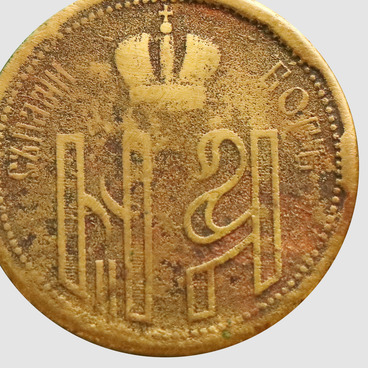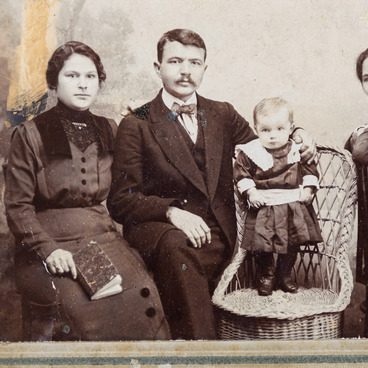This paper certifies that Ivan Kalashnikov was awarded a ‘For Diligence’ medal with the Saint Vladimir ribbon, honoring his masterful work and his distinguished reputation. It should be noted that Ivan Kalashnikov is not related to the famous inventor of the widely known assault rifle. Their matching surnames are coincidental.
In the first half of 19th century, a clockmaking trade school was opened in St. Petersburg. Clockmakers were in high demand at the time, and their business was lucrative. During Napoleon’s european conquest, lots of immigrants started arriving to Russia — the number of clockmakers working in the country has significantly increased.
“For Diligence” medal is a state award established in 1801, during the reign of Alexander the First. The medal was awarded to a wide range of people — including women — for various services provided to the government. The lower military ranks were awarded this medal for serving past the due discharge date. People “of the noble rank” were awarded the medallion medals “For Diligence” for serving as church elders — these medals were not meant to be publicly displayed.
Many of these medals were issued during Nikolas II’s reign. In 1903–1906, on average 1 900 golden and 3 000 silver medallion medals were awarded annually, as well as 2 700 golden and 15 300 silver breast medals. During that same period, 11 golden and 1 silver medallion medals were issued annually to the people ‘of noble rank’, on average.
Medals were manufactured from gold and silver, from 1917 onward — from yellow and white metals, respectively. They were worn around the neck on the ribbons of Order of St. Stanislaus, St. Anna, St. Alexander Nevsky, St. Vladimir, and St. Andrew the First-Called. Anton Vasyutinsky, a master medalist, manufactured the stamps with the profile of Nikolas the Second. Vasyutinsky was an artist, a scuptor, a medalist, and a carver. He created multiple medals for the Russian Empire and the Soviet Union.
On the front of the medal, there was a profile of emperor Nikolas II. The inscription along the edge of the medal read: left — ‘BY GOD’S GRACE, NIKOLAS II, EMPEROR’; right — “AND TZAR OF ALL RUSSIA” On the reverse of the medal, there was an inscription reading “FOR DILIGENCE”. On the left side, going in a circle, there were a branch of oak, a palm branch, and a laurel branch, all tied with a ribbon.
In the first half of 19th century, a clockmaking trade school was opened in St. Petersburg. Clockmakers were in high demand at the time, and their business was lucrative. During Napoleon’s european conquest, lots of immigrants started arriving to Russia — the number of clockmakers working in the country has significantly increased.
“For Diligence” medal is a state award established in 1801, during the reign of Alexander the First. The medal was awarded to a wide range of people — including women — for various services provided to the government. The lower military ranks were awarded this medal for serving past the due discharge date. People “of the noble rank” were awarded the medallion medals “For Diligence” for serving as church elders — these medals were not meant to be publicly displayed.
Many of these medals were issued during Nikolas II’s reign. In 1903–1906, on average 1 900 golden and 3 000 silver medallion medals were awarded annually, as well as 2 700 golden and 15 300 silver breast medals. During that same period, 11 golden and 1 silver medallion medals were issued annually to the people ‘of noble rank’, on average.
Medals were manufactured from gold and silver, from 1917 onward — from yellow and white metals, respectively. They were worn around the neck on the ribbons of Order of St. Stanislaus, St. Anna, St. Alexander Nevsky, St. Vladimir, and St. Andrew the First-Called. Anton Vasyutinsky, a master medalist, manufactured the stamps with the profile of Nikolas the Second. Vasyutinsky was an artist, a scuptor, a medalist, and a carver. He created multiple medals for the Russian Empire and the Soviet Union.
On the front of the medal, there was a profile of emperor Nikolas II. The inscription along the edge of the medal read: left — ‘BY GOD’S GRACE, NIKOLAS II, EMPEROR’; right — “AND TZAR OF ALL RUSSIA” On the reverse of the medal, there was an inscription reading “FOR DILIGENCE”. On the left side, going in a circle, there were a branch of oak, a palm branch, and a laurel branch, all tied with a ribbon.



